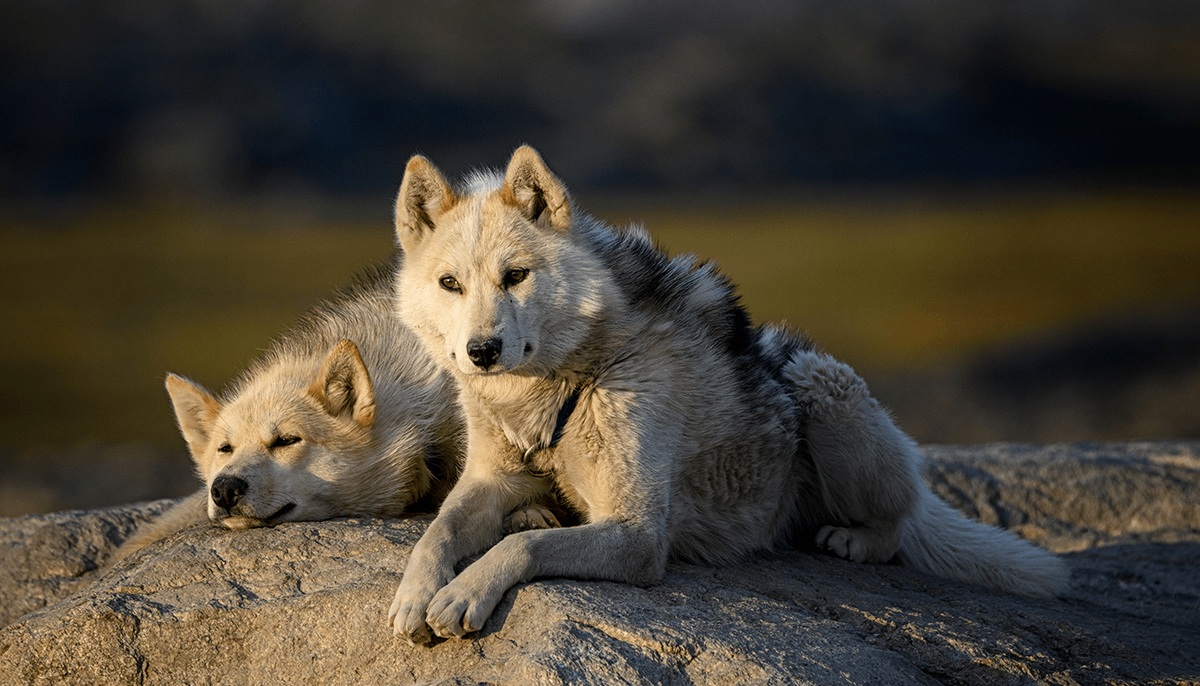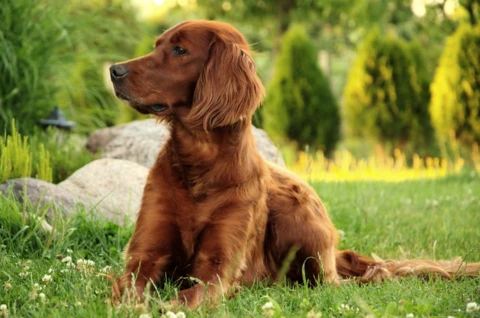
When thinking of dogs that look like wolves, one would be remiss not to mention the powerful Greenland dog. Although not a wolf-dog like the Czechoslovakian Vclak, these sled dogs are so ancient and unchanged through millennia that to see one is to glimpse a part of ancient human history.
To this day, most Greenland Dogs are kept the way they have always been. Greenland Dog puppies run wild until they are old enough to run in the sled. Once adults, they will face freezing temperatures, hunt seals and polar bears, and haul sleds across grueling terrain.
Although the Greenland Dog is thought of as a breed, in reality, it is a landrace.
That means it is a type of dog that developed naturally alongside humans and was isolated from other species. It is one of five major types of sled dogs, including the Alaskan Malamute, the Siberian Husky, the Alaskan Husky, and the Samoyed.
However, it is amongst the purest of breeds. It is illegal to breed them with imported dogs in Greenland, and efforts have been made to protect the dog and the culture it represents.
History of the Greenland Dog: Where Do They Come From?
The Greenland dog is known by the Innuit people only as Qimmit or Qimmiq. This simply means “dog,” as they were the only dogs the early Innuit people initially knew about. In Greenland, they are called the Grønlandshund.
The first people to settle in the Arctic with their dogs were the Paleo-Eskimo people around 4500 years ago. The remains of their dogs indicate that they were only kept sporadically and often eaten.
It is only with the Thule people’s migration into the Arctic about 1000 years ago that the Greenland Dog truly arrived. The Thule people are the ancestors of the modern Inuit.
With their arrival, they and their dogs rapidly spread across the Canadian Arctic and eventually to Labrador and Greenland.
The first westerners to become aware of the Greenland Dog and likely learn sled dogging from the Innuit people were the Vikings. The latter settled there between the 980s CE and 15th century CE. They probably bartered with Inuit people.
The Thule dogs remain genetically pure to this day, and they were integral to the Thule survival. Early sleds were fashioned out of driftwood and whalebone.
The dogs moved with family groups and soon learned to help this hunter-gatherer society find seal breathing holes or keep away dangers like polar bears.
Even more remarkably, a genetic study done in 2020 reveals that the Arctic sled dogs had developed mutations such as how they use oxygen to deal with the cold. Also, their genetic heritage is even older than previously thought.
The study revealed that the Greenland Dog is genetically closer to the 9500-year-old remains of a sled dog found in Zhokhov than any other breed. This suggests a continuous genetic line for at least 10 000 years.
They also found some admixture signs between these sled dogs and early Pleistocene wolves, making them literal relics of early human and canine evolution.
Today, Greenland takes strict measures to microchip and record these dogs to preserve them. Any outcrossing is strictly prohibited.
Nevertheless, their numbers are falling as snow vehicles replace the need for draught dogs. The cold climates the dogs are evolved to handle are also sadly dwindling.





